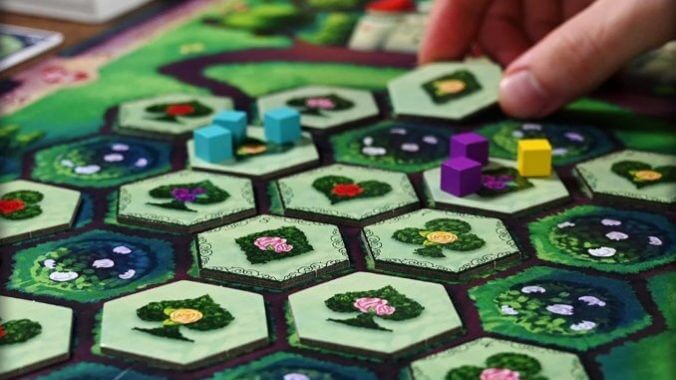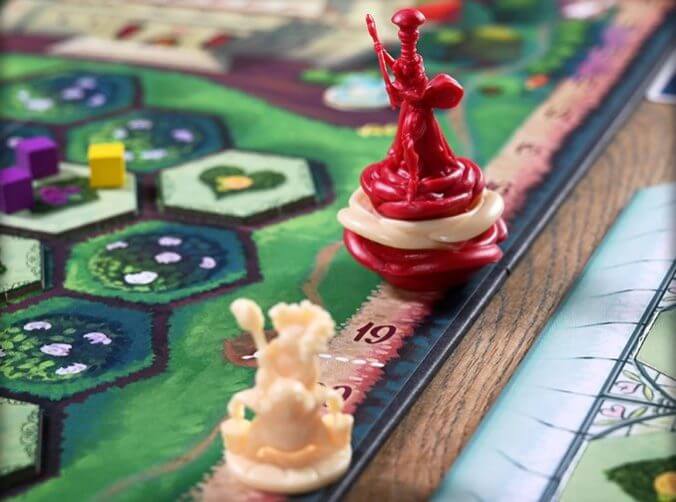Don’t Lose Your Head Playing the Surprisingly Hard Board Game Paint the Roses

Paint the Roses is a deduction-based cooperative game with an Alice in Wonderland theme, but this is definitely no kids’ game—it’s surprisingly hard, even with the simplest rules in the base game.
In Paint the Roses, two to five players work together to try to fill the garden with flower tiles. At the same time they’re trying to deduce other players’ secret Whim cards, so that they can advance their token around the numbered track on the outside of the board. On a player’s turn, they choose one tile from the four on display and place it on the board, and then they choose which players’ Whim card the other players need to guess. If the players fill the garden before the Queen token catches up with the players’ token, they win, but the Queen gets to move after every player’s turn, speeding up as the game goes along, and moves twice as fast if the players guess incorrectly at any point.
Each tile has a flower in one of four colors and a plant shaped like one of the four suits from a deck of playing cards. The Whim cards relate to adjacent pairs of tiles on the board, and come in three levels of difficulty: Easy cards can only be color to color, medium can be color/color or shape/shape, and hard can be color/color, shape/shape, or color/shape. When you place a tile, all players put cubes of their color on that tile indicating how many adjacent tiles match their Whim card along with the new tile. So if you have a card that shows a pink flower and a purple flower, and then you place a pink flower tile that’s next to two purple flower tiles already on the board, you’d put two of your cubes on it. These cubes become clues so that others can deduce what’s on your card, or at least narrow it down to two or three possibilities.
If the players guess correctly, the players’ token moves forward the number of spots shown on that Whim card, from one for an Easy card to up to five for some Hard cards. The players can even guess multiple Whim cards in one turn. At the end of their turn, the Queen moves forward, just one space at the start of the game, with that number increasing as the players pass certain thresholds on the scoring track. If the players guessed any card incorrectly, the Queen moves twice as many spaces. The Queen does start behind the players, but it’s easy for her to catch up if you guess incorrectly a couple of times, so you don’t have much margin for error. That mechanic is new to me within cooperative games—so many use the Pandemic-style condition of a threat that increases in intensity as certain cards appear in the deck, but in this case, the Queen is chasing you around a track, and you can plan ahead to some degree to at least keep her from speeding up.
-

-

-

-

-

-

-

-

-

-

-

-

-

-

-

-

-

-

-

-

-

-

-

-

-

-

-

-

-

-

-

-

-

-

-

-

-

-

-

-









































